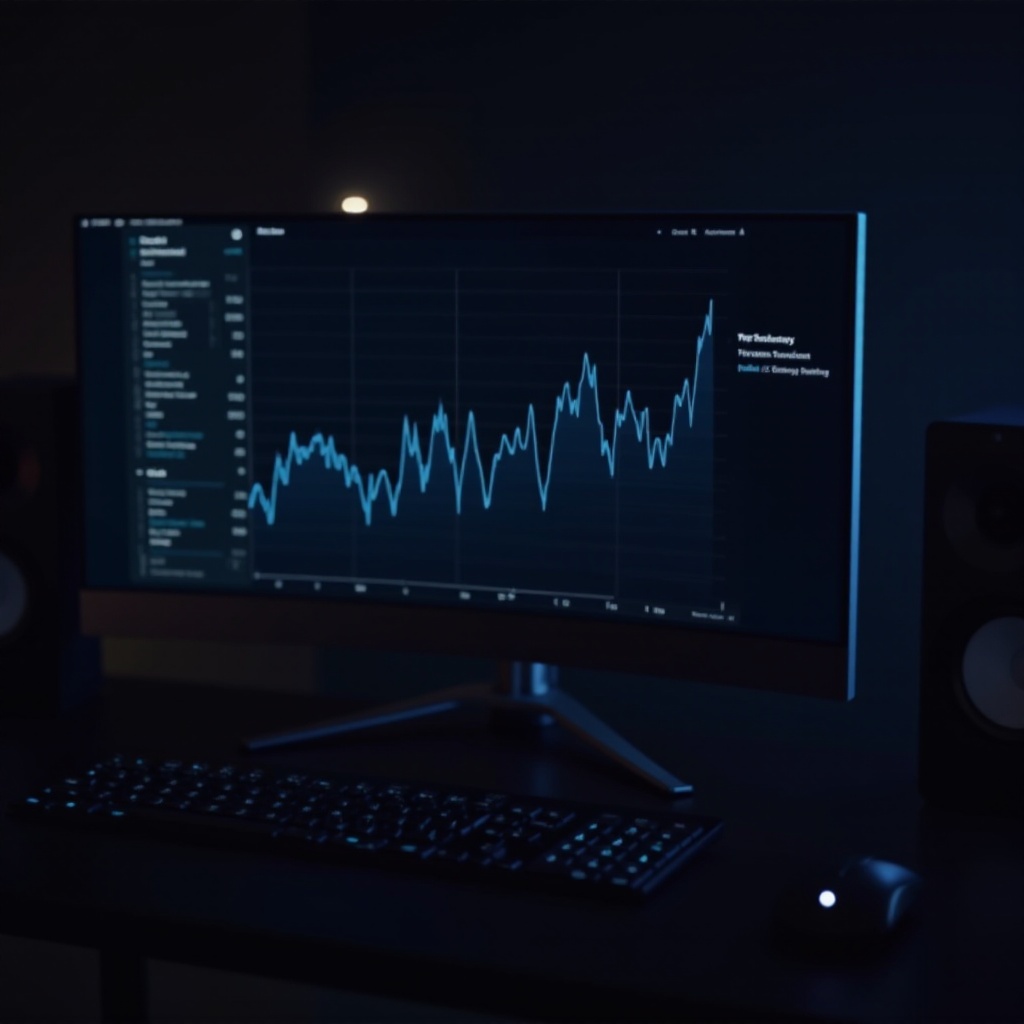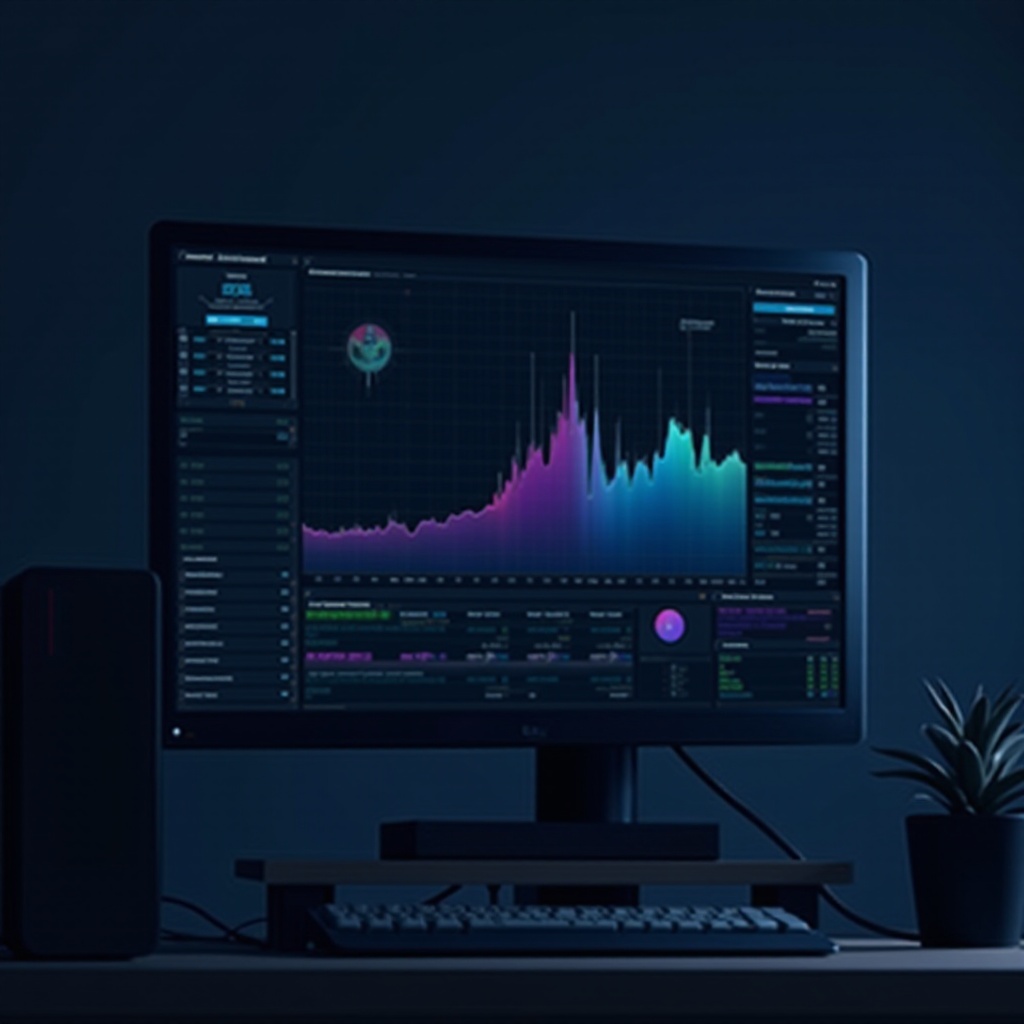
Introduction
Your computer’s CPU, or Central Processing Unit, is the primary hub of activity, handling all directives from both hardware and software. Efficient CPU usage is essential for sustaining smooth system operations. However, many people are uncertain about what constitutes acceptable CPU usage or its impacts on everyday computing tasks. In this article, we’ll explore the optimal CPU usage percentages, factors contributing to usage levels, and methods to observe and resolve CPU-related issues. By understanding CPU usage, users can ensure their system performs optimally without unnecessary stress or the risk of overheating. Whether your needs align with gaming, professional work, or casual browsing, this guide will help you maintain system health and ensure a seamless computing experience.

Understanding CPU Usage
CPU usage reflects how much processing capacity your computer is utilizing at any specific time, usually represented as a percentage. A CPU constantly functioning near maximum capacity—especially at 100%—may struggle with multitasking, potentially slowing down the system or leading to crashes. On the other hand, very low CPU usage might indicate underuse or can be seen as efficiency in task execution. Understanding CPU usage metrics can help you assess if your system is distributing resources effectively.
Various elements affect CPU usage, such as the applications you’re running, background processes, and system tasks. By monitoring these, you can identify resource-heavy applications and optimize performance. Recognizing what constitutes normal versus abnormal CPU activity is crucial for diagnosing potential issues and ensuring system longevity. This understanding directly impacts your ability to effectively manage your computer’s performance.
Ideal CPU Usage Percentages
Achieving ideal CPU usage requires balancing efficiency without overburdening the processor. During normal operations, CPU usage typically ranges from 10% to 30%, signaling that your system can comfortably handle additional tasks. Engaging in more demanding activities, such as gaming or video rendering, might cause CPU usage to spike to 70% or even higher. While brief peaks in usage are normal, sustained high levels could indicate the need for better cooling solutions or hardware upgrades.
By maintaining your CPU within these optimal ranges, you can conserve energy and reduce wear and tear, effectively prolonging the life span of your hardware. Users should strive for these usage percentages to optimize their computer’s performance, energy use, and overall system health, while being prepared for specific workload requirements.
Factors Influencing CPU Usage
Multiple factors contribute to how your CPU manages its workloads:
- Running Applications: Resource-intensive programs, such as video editing software, can significantly raise CPU usage.
- Background Processes: These often-hidden activities, including system updates and antivirus scans, can unexpectedly increase CPU usage.
- Hardware Configurations: Older CPUs or insufficient RAM can bottleneck performance, leading to higher usage percentages.
- Operating System: Different operating system versions may handle resources more efficiently, impacting your CPU’s demands.
- Temperature and Cooling: Higher CPU temperatures can reduce efficiency, thus increasing usage.
Understanding these variables allows users to better manage their CPU loads, identify when hardware or software adjustments are needed, and maintain desired performance levels.
Monitoring CPU Usage
With the right tools, monitoring CPU usage is straightforward. Tools like Task Manager for Windows or Activity Monitor for macOS provide real-time insights into your CPU’s performance. These applications display active processes and their respective CPU use, enabling you to quickly identify resource hogs or non-essential tasks.
For more detailed analysis, third-party software such as HWMonitor or Core Temp offers additional data, from temperature readings to individual core performance. Regularly monitoring CPU usage helps users identify patterns or anomalies that might warrant further investigation and corrective actions.

Troubleshooting High CPU Usage
Addressing high CPU usage promptly is essential:
- End Non-Essential Processes: Use Task Manager or Activity Monitor to close unnecessary programs using significant CPU resources.
- Check for Malware: Conduct antivirus scans to rule out any malicious programs consuming resources.
- Update Software: Ensure that your operating system and applications are up to date, as updates can fix bugs and improve efficiency.
- Adjust Software Settings: Many applications, including games, offer performance settings that can be lowered to reduce CPU demands.
- Consider a Hardware Upgrade: If issues persist, upgrading components such as RAM or the CPU might be necessary.
Resolving high CPU usage can lead to improved system responsiveness and stability, optimizing resource usage while minimizing lag and overheating.

When to Worry About CPU Usage
While CPU usage naturally varies, users should be concerned if their CPU consistently operates above 90% during standard tasks or frequently stays at 100% without any significant load. Such patterns might lead to overheating, decreased system responsiveness, and potential hardware failure. Immediate investigation and corrective actions are needed to prevent long-term damage to your system.
Optimizing CPU Performance
Optimizing CPU performance involves both hardware and software strategies:
- Upgrade CPU and RAM: Newer components can better accommodate advanced applications, reducing stress on the CPU.
- Efficient Software Utilization: Opt for lightweight applications and minimize background processes to keep CPU usage in check.
- Regular Maintenance: Clean the system to prevent dust buildup, which can cause overheating and affect performance.
- Effective Cooling Solutions: Ensure proper ventilation and cooling systems to prevent thermal throttling and maintain optimal CPU efficiency.
Implementing these strategies ensures streamlined performance, maximizing efficiency, and extending the lifespan of your computer’s components.
Conclusion
Understanding what percentage your CPU should be running at is crucial for optimizing your computer’s performance. Recognizing normal usage ranges and factors that may skew these values allows you to proactively manage and maintain your system’s health. Utilize monitoring tools, address issues promptly, and apply optimization techniques to avoid common pitfalls such as overheating or sluggishness. These practices ensure your CPU operates efficiently and reliably across a variety of tasks, contributing to a smooth and productive computing experience.
Frequently Asked Questions
What is a normal CPU usage while gaming?
During gaming, CPU usage can range from 70-80% based on game demands and system specs, a normal spike due to rendering graphics and game logic handling.
How can I lower my CPU usage?
To lower CPU usage: close unnecessary applications, limit browser tabs, reduce graphical settings, perform system maintenance and updates, and ensure proper cooling.
Is it bad if the CPU is running at 100%?
A CPU at 100% usage briefly is fine, but prolonged periods may indicate software issues, inadequate cooling, or hardware failure risk, needing prompt troubleshooting.
